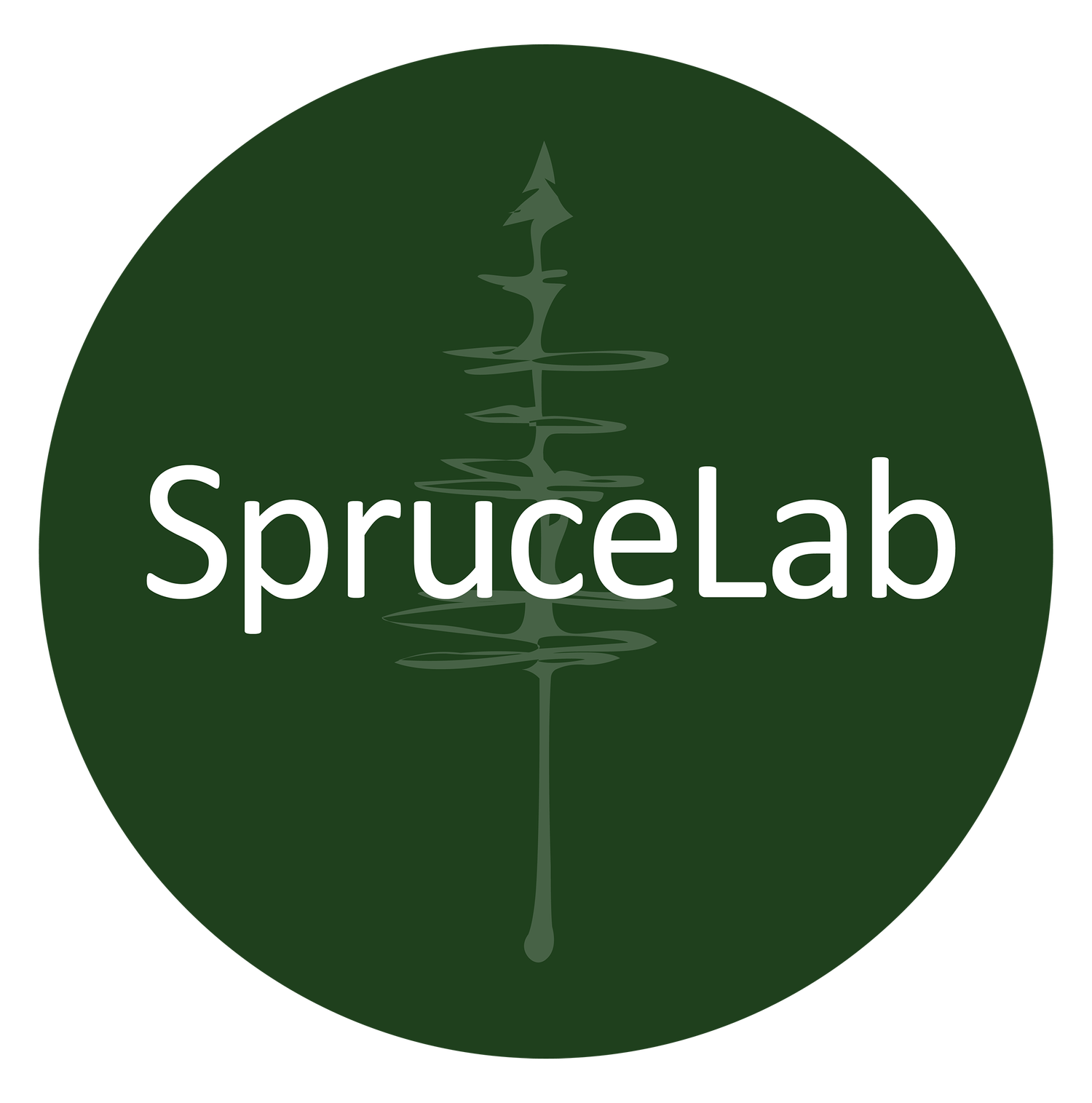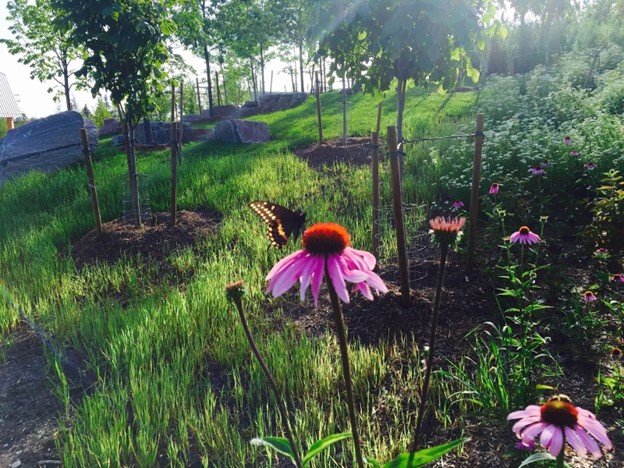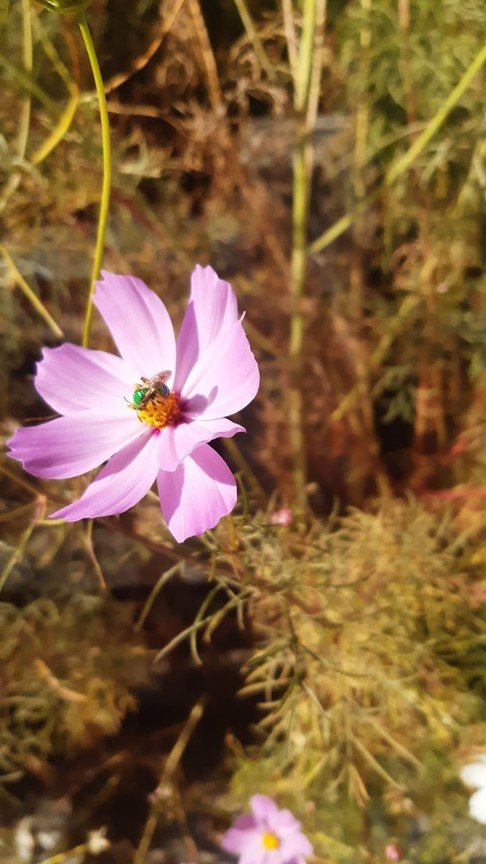Rain Gardens: Positive Impacts with Planting
Written by Cat Sobotta while working at SpruceLab, edited by Natalie Sisson
Each one of us has the power to contribute to the well-being of our fellow humans and non-humans alike. One simple way to positively impact the surrounding world is to plant more native species, and/or to leave space for native species to re-establish themselves.
If you don’t have property to plant on, perhaps you have a neighbour willing to spruce up their yard with colourful native varieties, or there may be a community garden in your neighbourhood you can sign up with. If not, you could also start your own! You can gift native plants and shrubs to friends and family who have property or balconies, or find local planting events like the ones LEAF leads, or educational workshops like Sustainable Roots Ecological Restoration and Toronto and Region Conservation Authority (TRCA) offer.
SpruceLab team and friends planting a native plant seed orchard in Claremont, Ontario.
Community Planting
In October 2021, Centennial College Story Arts Centre organized a community event for transforming their front lawns into oases for little critters - native plant gardens with over 150 perennials, shrubs and trees. A planting event is a great excuse to gather outside and feel good about getting your hands dirty together, while contributing to a valuable transformation of a space. Feel good because the mycobacterium in the soil is triggering a release of serotonin (the happy hormone!) in your brain. Plus, your work will be admired and provide habitat, food, and joy for generations to come.
Image: Rain Gardens United
Rain Gardens
Add a bonus to your native plant garden by converting it to a rain garden with drought and flood tolerant species. You can view a how-to build video series from Landscape Ontario here, and a guidebook from Rain Gardens United here, created by SpruceLab. A rain garden provides storage to quench the thirst of your plants while recharging groundwater. The plants and soil naturally remove pollutants to return cleaner water back to the environment. Rain gardens are created, simply put, by digging a deeper pit filled with a sandy soil mixture under the garden and directing your rain gutter downspouts (or overland flow via swales) to it. This will capture rainwater and infiltrate it back down into the ground where plants can access it, in their root zone, and where it can refill groundwater, while keeping it out of the sewers where it may cause basement flooding or erosion downstream. Toronto Green Community’s RainScapeTO offers a free consultation.
Why Native Species?
Any increase in native plants is beneficial for the earth. If you can plant one plant, who then feeds one bee, who then pollinates one apple… the butterfly effect flutters on. Native plants are species Indigenous to an area and have been established with the local climate, flora and fauna for many generations. This contributes to their resilience. The local animals and insects have evolved around these plant species and adapted to easily digest and use them.
Purple coneflowers in bloom at Trillium Park, Toronto.
The Buzz About Pollinators
Bees, flies, wasps are essential for our food production. Native plantings, without requiring pesticides, herbicides and providing vital food sources to pollinators can help turn the declining trend in global pollinator populations back into the positives.
Decolonizing Lawns
Lawns were invented, in part, to control the environment: monocultured and manicured. It would be a profound cultural and societal shift to decolonize our lawns by planting a diversity of native species instead. There is strength and resilience in diversity.
You can get the added benefit of food production by choosing to plant edible native species, like strawberries, wild onion, sunflowers, elderberry, and pawpaw fruit, to name a few.
Strawberries grown in an “Earth Box” on ChocoSol Trader’s urban rooftop garden in Toronto.
Aesthetics
Beauty may be subjective, but just as nature is the best engineer, she can also be the best artist. Take asters and goldenrod - in nature, they often grow side by side, offering a stunning display of contrasting colours, purple and yellow, thereby attracting more pollinators to both (Kimmerer, 2013). Symbiotic relationships are incredible.
Asters and Goldenrod in Trillium Park, Toronto.
Restoring Connections
Where once there may have been a threat to humans by the powerful natural world and the need to feel ‘superior’ to suppress fear of the wild, parts of our society have become so far removed from nature we now face the threat of losing that which sustains us. There has been enough separation of humans and the natural world - it is time to reconnect, to restore the roots to our ancestors who lived in harmony with the cycles of life and death. Living and making decisions from an intention of love for life, rather than fear of death. Loving all life, all living beings, giving space for others to grow and flourish. Giving space to the natural world to continue living by following the laws of co-existence, balancing and evolving side by side with one another, driven by invisible forces surging through time.
Action Items
Why not choose native when there are only benefits? The Grow Me Instead guide suggests native replacements for common plants.
Hands in the soil and garden! On your balcony, front yard, back yard, neighbour’s yard, or community garden, get creative!
Attend local planting events like the ones LEAF leads.
Next time you leave the house you can throw on your ‘green coloured glasses’ and scan your surroundings, looking for open spaces or opportunities to <insert native plant here>.
Happy planting!
References
The Ontario Invasive Plant Council, Grow Me Instead (2022).
webinar passcode: H53D8*ky
https://www.raingardensunited.com/how-to-build-a-rain-garden
Braiding Sweetgrass: Indigenous Wisdom, Scientific Knowledge and the Teachings of Plants. Robin Wall Kimmerer. Milkweed Editions, 2013.
Grant, Bonnie L. 2021. Antidepressant Microbes In Soil: How Dirt Makes You Happy, Gardening Know how. https://www.gardeningknowhow.com/garden-how-to/soil-fertilizers/antidepressant-microbes-soil.htm
Sommerfeld, Aime J. et al, 2010, Growing Minds: Evaluating the Effect of Gardening on Quality of Life and Physical Activity Level of Older Adults, American Society of Horticultural Sciences. https://journals.ashs.org/horttech/view/journals/horttech/20/4/article-p705.xml
Waliczek, T.M., Zajicek, J.M. and Lineberger, R.D. The Influence of Gardening Activities on Consumer Perceptions of Life Satisfaction. https://journals.ashs.org/hortsci/view/journals/hortsci/40/5/article-p1360.xml
A case–control study of the health and well-being benefits of allotment gardening
Carly J. Wood, Jules Pretty, Murray Griffin
Journal of Public Health, Volume 38, Issue 3, 17 September 2016, Pages e336–e344, https://doi.org/10.1093/pubmed/fdv146
Published: 17 October 2016
Gardening is beneficial for health: A meta-analysis. Science Direct, 2017.
Masashi Soga, Kevin J.Gaston, Yuichi Yamaura
https://www.sciencedirect.com/science/article/pii/S2211335516301401









